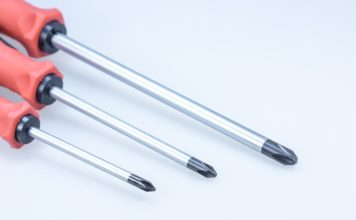Orangutans, the majestic creatures of the Bornean and Sumatran rainforests, are known for their distinctive reddish fur, long arms, and gentle demeanor. But behind the superficial similarities to humans lies a fascinating aspect of their biology that tends to go unnoticed: the unique structure and function of orangutan breasts. While breasts are a common feature in mammals for nourishing offspring, the orangutan’s approach to this vital function holds several surprises that challenge traditional assumptions.
The Anatomy of Orangutan Breasts
Orangutans possess prominent breasts that are unlike those of other primates. Primarily, the shape and positioning of their breasts are closer to those of humans than to other ape species. This distinct feature is further accentuated by the fact that orangutans are the only great apes in which females often have prominent, permanently swollen breasts—a characteristic typically rare in non-human primates.
In contrast to humans, who have prominent breasts as a sexual signal, orangutans’ breasts serve primarily utilitarian purposes related to reproduction and infant care. Female orangutans carry their offspring for an extended period, with nursing lasting up to 7 or even 8 years in the wild. As a result, their breasts are central to the survival and development of their young.
Moreover, orangutan breasts are not just passive structures but are intricately involved in the physical bonding between mother and baby. The act of nursing is crucial for the transmission of maternal antibodies and nutrients, supporting the infant’s immune system and growth. The shape and positioning of orangutan breasts facilitate this close contact during feeding, promoting a strong emotional connection between mother and offspring.
The Evolutionary Significance of Orangutan Breasts
The unique characteristics of orangutan breasts offer valuable insights into the evolutionary history of these remarkable animals. It is believed that the development of prominent and permanently swollen breasts in female orangutans is linked to their reproductive strategy. Orangutans have the longest interbirth interval among primates, with females giving birth to a single offspring once every 6 to 8 years on average.
This extended reproductive cycle necessitates prolonged maternal care and breastfeeding to ensure the survival and well-being of the offspring. The prominent breasts of female orangutans are thus an adaptation to this slow reproductive rate, providing the necessary resources for long-term nourishment and support. In this context, orangutan breasts can be viewed as an evolutionary solution to the challenges posed by their unique reproductive biology.
Furthermore, the study of orangutan breasts sheds light on the complex interplay between genetics, physiology, and behavior in shaping reproductive strategies in non-human primates. By examining the structural and functional aspects of orangutan breasts, researchers gain a deeper understanding of the diverse ways in which mammals have evolved to meet the demands of reproduction and parenting in their respective environments.
Conservation Implications of Understanding Orangutan Breasts
Beyond their scientific significance, the study of orangutan breasts carries important implications for conservation efforts aimed at protecting these endangered species. Orangutans face numerous threats in the wild, including habitat loss, poaching, and human-wildlife conflict. Understanding the unique reproductive biology of orangutans, including the role of their breasts in infant care, can help conservationists develop more effective strategies for safeguarding these iconic animals.
Efforts to conserve orangutans must take into account not only their habitat needs and population dynamics but also their reproductive physiology and behavior. By recognizing the importance of breastfeeding and maternal care in orangutan populations, conservation initiatives can prioritize the protection of critical areas for breeding and nesting, as well as address human-related factors that may disrupt natural reproductive patterns.
Moreover, raising public awareness about the ecological significance of orangutans and the role of their breasts in sustaining healthy populations can foster greater support for conservation measures. By highlighting the unique aspects of orangutan biology, including their distinctive breasts, conservationists can engage communities, policymakers, and stakeholders in collaborative efforts to safeguard these vulnerable primates and their habitats for future generations.
Frequently Asked Questions (FAQs)
1. Do male orangutans have breasts too?
While male orangutans do not have prominent breasts like females, they do have rudimentary mammary glands. These structures are vestigial and serve no functional purpose in males, unlike in females where breasts are essential for nursing offspring.
2. How long do orangutans breastfeed their young?
Orangutans have one of the longest breastfeeding periods among mammals, with nursing lasting up to 7 or 8 years in the wild. This extended period of maternal care is crucial for the survival and development of orangutan infants.
3. Why do orangutan breasts look similar to human breasts?
The similarities in the shape and positioning of orangutan breasts to human breasts are believed to be a result of convergent evolution. Both species share a common mammalian ancestor, and their breasts have evolved independently to fulfill similar functions related to infant care and reproduction.
4. Are orangutans the only primates with prominent breasts?
While orangutans are the only great apes in which females have prominently swollen breasts, other primate species display variations in breast size and shape. For example, chimpanzees and bonobos also have visible mammary glands, though they are not as pronounced as those of orangutans.
5. How do orangutan breasts contribute to infant health and development?
Orangutan breasts play a crucial role in providing essential nutrients, antibodies, and maternal care to infant orangutans during the extended breastfeeding period. The close physical contact during nursing promotes bonding between mother and offspring and supports the healthy growth and development of the young orangutans.
In conclusion, the study of orangutan breasts offers a unique window into the fascinating world of primate biology and evolution. By unraveling the mysteries of these distinctive structures and their role in orangutan reproduction and parenting, researchers gain valuable insights into the complexities of life in the rainforest. Through continued research and conservation efforts, we can ensure the survival of these remarkable creatures and preserve the rich tapestry of biodiversity that they represent in the natural world.








